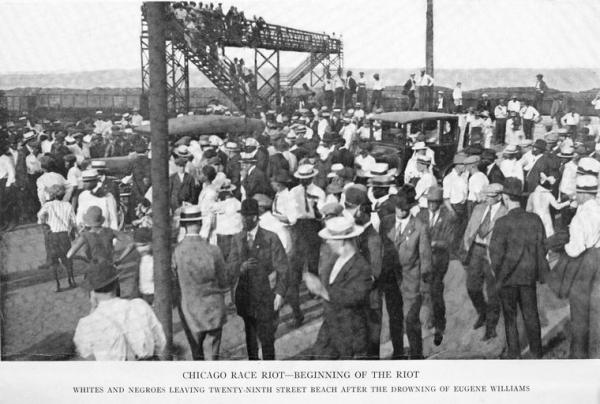Chicago 1919: Confronting the Race Riots
Division of Public Programs

Chicago 1919

Chicago 1919
Chicago’s Newbery Library—in partnership with 13 other Chicago institutions— curated online content and designed 11 dynamic public programs for the project Chicago 1919: Confronting the Race Riots. This year-long, citywide initiative engaged Chicagoans in public conversations about the legacy of the most violent week in Chicago history.
Triggered by the murder of a Black teenager, Eugene Williams, on a Lake Michigan beach, on July 27, 1919, simmering racial tensions in Chicago erupted into seven days of violent conflict between groups of Black and white Chicagoans, in what became known as the “Red Summer.” Thirty-eight people were killed during the week of rioting—23 Black and 15 white—and 520 Chicagoans were injured, with two thirds of those injuries being sustained by African Americans. Of the 138 persons indicted for riot-related crimes, two thirds were also African American, making this population both the primary victims and primary perpetrators of the 1919 race riots.
Encompassing a wide variety of public programs, from public lectures, debates, and film screenings to spoken word performances and a historical bike tour of the South Side neighborhoods at the center of the 1919 riots, the Newberry’s Chicago 1919: Confronting the Race Riots encouraged audiences to examine the mechanisms through which segregation and inequality have been created, solidified, and reinforced over the past 100 years. Each program focused on a specific expression of institutionalizes racism, from policing and education to housing and the media.
This NEH-supported public program received the 2020 Outstanding Public History Project Award from the National Council on Public History. Read about the program at the Chicago Sun Times and Chicago Tribune.